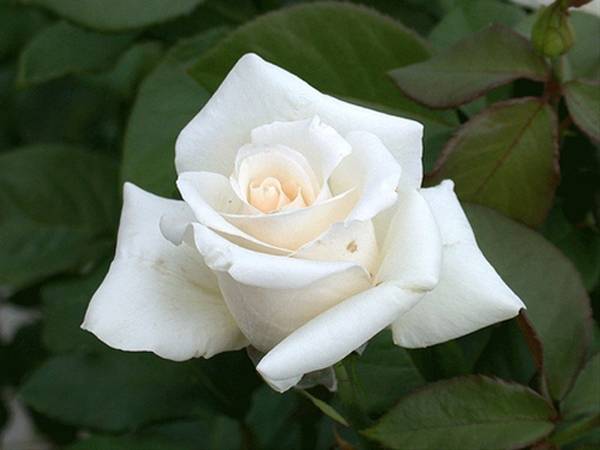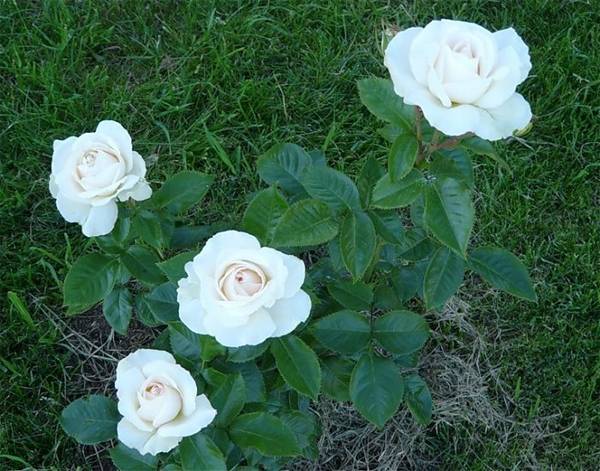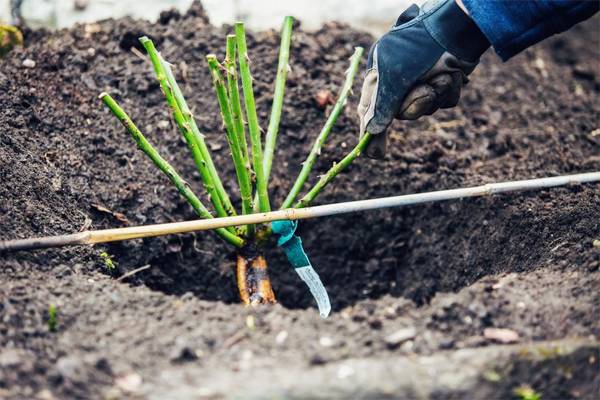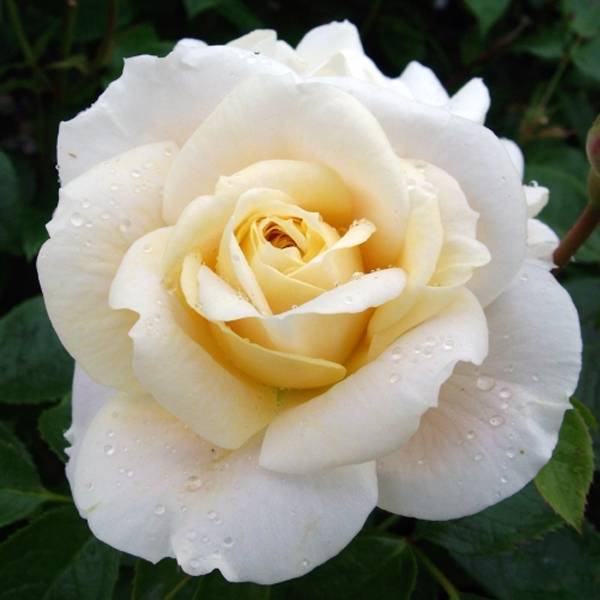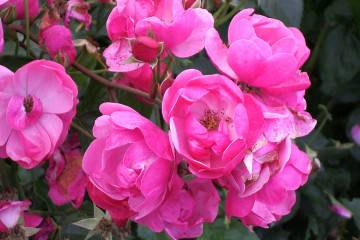Rose Anastasia (Anastasia)
Content:
Anastasia hybrid tea rose blooms with milky white flowers with a creamy yellow heart. The plant was bred by French breeders from NIRP International in 2001 by crossing two varieties - Paul Pekmez (France) and Jurgen Evers (Germany).
Initially, roses of this variety were considered as a decoration for a flower vase and were intended for cutting. Gardeners are happy to grow Anastasia in flower beds and use it as borders to delineate a recreation area.
Description rose Anastasia
It is an upright plant with powerful, densely leafy shoots and few thorns. It has large leaves with a glossy surface. On each stem, one large (up to 15 cm in diameter) snow-white flower is formed with a barely distinguishable creamy shade in the core. The height of an adult bush is 100-110 cm.
Each flower has 26 to 40 petals. As the flower ripens, the extreme petals are bent back towards the stem.
All parts of the plant, including flowers, are immune to sudden changes in temperature and rainfall. In very damp weather, rose petals can be spotted, but this is extremely rare.
Landscape designers call this hybrid the foreground flower. Rose white Anastasia looks good in front of the entrance to the house, at the gate of the garden and against the backdrop of garden pavilions.
Planting and care rules
Most gardeners plant Anastasia rose in open ground in the spring. Residents of the southern regions plant in the fall. The seedlings are planted so that the grafting site is deepened into the ground by 8 cm.
To plant a purchased seedling, a hole is dug, the dimensions of which are twice the size of the container in which the planting material was sold. Planting cuttings is carried out as follows:
- The roots of the cuttings are immersed in a bucket of water at room temperature and left overnight.
- Dig a hole, the size of which is not inferior to the volume of the root system. The kidney should be 2.5 cm below ground level.
- Having installed the Anastasia rose in the hole, the root system is laid out so that the ends of the roots look in different directions. The hole is first filled with soil up to half, after which, armed with a garden hose, the soil is abundantly watered around the roots until it turns into mud.
- At the next stage, the hole with the handle is filled with soil, watered again abundantly and the washed layer of earth is renewed.
In early spring, during the period of foliage formation, the rose is fed with universal fertilizers that are suitable for roses, and during the growing season, several more dressings are made.
Rosa Anastasia loves moderate watering, places open and accessible to sunlight, as well as nutritious, moisture-permeable soil that does not interfere with root gas exchange. The ideal option is loamy soil with low acidity. The area where roses are planted should be well ventilated, but not open to drafts.
In the spring, Anastasia needs to be fed with nitrogenous fertilizers, and during the flowering period - with a nutrient mixture consisting of potassium, iron, magnesium, manganese, phosphorus and boron. Pruning is done in spring, summer and autumn:
- remove dried flowers;
- free the bush from broken and old branches.
Spring pruning in detail
It is necessary to cut the Anastasia rose at the very beginning of spring after the onset of the first warm days. They start by removing dead and faded branches. Then all lateral branches are cut, after which healthy branches are trimmed by about a third of their height.
A period of rest and activity
Rose Anastasiy is a winter-hardy variety. It can hibernate in a garden bed without shelter, provided that the temperature drops at least -20 ° C. When the air temperature drops below the specified mark, it needs shelter. The maximum temperature at which the Anastasia rose can winter in the open field is −23.3 ° C.
Caring for a flowering plant consists of watering with warm water at the root (at least 5 liters twice a month), shallow loosening of the soil (especially after watering or rain), removing weeds, feeding with nitrogen-containing and phosphorus-potassium fertilizers and periodically examining the bushes for the appearance of diseases ...
In the absence of fertilizers and irregular watering, the rose withers and stops blooming, and an overabundance of attention from the gardener can lead to fungal infections.
Reproduction methods
The best way to propagate this variety is by cuttings. In autumn, hard shoots are chosen and, having cut them off, they tear off the foliage and store until spring, immersed in a mixture of moss, peat and sand. At the same time, make sure that the storage temperature is below 0 ° C. With the onset of spring, shoots that have survived the winter are cut into several pieces, at least 10 cm in size.
Cuttings are planted at the junction of April and May.
The rose is quite resistant to powdery mildew and black spot, but it is afraid of garden pests - thrips and bronzes. To protect the plant from diseases and garden pests, it is enough to regularly disinfect the equipment and treat the rose and the ground around it with modern chemicals every year.
In general, even a novice grower can grow this variety. The main thing is to follow the rules of planting and care above, and then Anastasia will bloom all summer.
